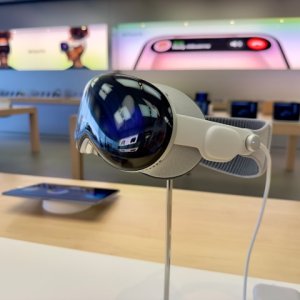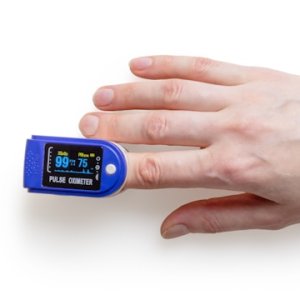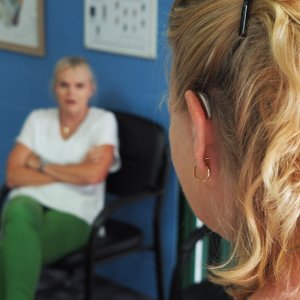Leveraging AI to Improve Cancer Diagnosis

STORY INLINE POST
Q: How have AI and machine learning contributed to the development of Hera Diagnostics’ solution?
A: AI means everything in terms of our product. This technology has allowed us to develop a low-cost product that detects cervical cancer. It allows for instantaneous cancer detection without the need for a tissue sample or laboratory work. Our product uses electrical and optical spectroscopy and AI algorithms to determine the presence of cancer in tissue. In an initial clinical study done by Hera Diagnostics, the HeraFem device performed better than the traditional pap smear.
Q: What reception has the product received from the Mexican medical community?
A: Our product is now in its last stage of development. We are undergoing trials to improve its specificity and thus decrease the rate of false positives. We are collaborating with opinion leaders and physicians and we have received great interest in this technology. Cost is vital to the medical community so there is a need to ensure that any improvement does not come at the expense of the payer. Based on an initial clinical study, HeraFem product is more accurate than the traditional pap smear and is low cost.
We have consulted with experts in the field, Ob-Gyn specialists, and have received feedback about the product’s design to ensure it is user-friendly. These specialists have also helped us with proof-of-concept, clinical trials and a better understanding of the medical practitioner market. The pap smear has been the gold standard for about 80 years and trying to bring a disruptive new option for such a consolidated practice requires that we have a deep understanding of the end user.
Q: How have you designed the system to ensure adequate test sensitivity and specificity?
A: This technology uses intelligence algorithms, mainly machine learning. The more and better data we provide the better the results. As such, our first testing was done with data from a little over 200 patients. While not all of them had cancerous lesions, which were needed to improve the algorithm, we ensured a sensitivity of 90 percent compared to biopsy analysis. This means that, at this stage, out of 10 patients with cancer, our technology identifies nine. During the same trial, the traditional pap smear only detected three or four out of 10.
Regarding specificity, the rate of false negatives, we achieved a 65 percent. We aim to raise the specificity for realizing the product to the market, aiming at a specificity of at least 85 percent.
Q: One particular pitfall of AI is bias. How do you ensure this technology performs adequately across many populations?
A: Our mission as a company is to save lives and the product was designed with consideration of those who need it most at the center. Around 90 percent of women who die of cervical cancer do not live in the US, Canada or the EU; the majority of them live in low-income countries. To reach them, we need to provide a cheap product and while we have designed with these factors in mind, the product is not yet ready to reach the most economically challenged markets. On the other hand, our product is ready to for middle-income countries like Mexico.
We are also developing a similar product for the identification of skin cancer but the technology and its algorithms still need some adjustments.
Q: How do you plan to introduce the company to the Mexican market and what are your expansion goals?
A: There are two main segments for the Mexican market: the public and the private sectors. For the public sector, we have a strategic alliance with Encore Health. This company has more than 30 years of experience selling medical devices to the public sector, which performs more than 50 percent of pap smears. Regarding the private sector, we will probably have many early-adopter physicians. We will need to work with medical associations and carry out clinical trials to ensure their approval. Nonetheless, we will have to work in a disruptive way to achieve our goal: to replace pap smears completely.
We also plan to carry out more extensive, independent trials. We have applied for NIH grants that would allow us to perform these trials in both the US and Mexico. This would help us better educate the medical community and provide more evidence to back up our claims.
We also plan to educate consumers. The medical community at times underestimates how much anxiety a woman experiences waiting days or weeks for a result. With HeraFem, there is no need for waiting. This is a better patient experience and women deserve a better test.
Q: How do you approach prevention and ensure a timely diagnosis?
A: Our product was designed with marginalized populations in mind, it requires no lab or tissue samples and is portable and instantaneous. We have collaborated with the government, NGOs and foundations to bring this technology to where it is needed.
Q: How can Mexico foster innovation for health-based technologies?
A: Mexico invested in us and allowed us to get this far. CONACYT allowed us to take this from a proof-of-concept and a patent, to a commercial product. The government must support the commercialization of Mexican technologies. While the world of venture capital has focused on software technologies, such as fintech, Latin America has the potential to provide innovation beyond software. Governments across the region should focus on this aspect to ensure a balanced economy, potentially creating many jobs. It is well documented that Deep Tech companies, which require manufacturing, have a larger multiplier effect on economic development than software companies. The job creation is across a broader range of skill sets, including professional, para-professional, and hourly employees.
Hera Diagnostics is US company that is commercializing a Mexican technology. The company aims to improve cancer diagnosis through the use of AI and optoelectrical spectroscopy. Hera aims to be the go-to option for cervical cancer screening and other cancer types including skin, colon, and throat cancer.








 By Miriam Bello | Senior Journalist and Industry Analyst -
Tue, 07/13/2021 - 13:00
By Miriam Bello | Senior Journalist and Industry Analyst -
Tue, 07/13/2021 - 13:00















